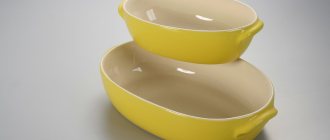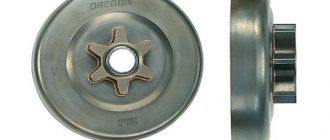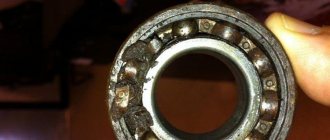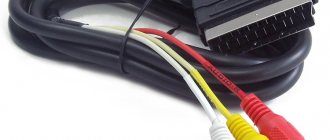The summer season is a conservation time for every housewife, during which it is necessary to prepare a large amount of supplies for the winter. To do this, you need not only to select and prepare the necessary products, but also to prepare jars in which they will be stored all winter. Most housewives sterilize jars over burning steam - this process is very labor-intensive, and quite unpleasant in the summer heat. To ensure that sterilization does not take much time, you can use a microwave; the entire process of preparing the jars will only take a couple of minutes.
Pros and cons of sterilizing jars in the microwave
Preparing jars for oven canning has both pros and cons.
pros
- This method is very fast compared to the conventional method. You will only need 5-6 minutes to sterilize, unlike the traditional method, where you will need to pour water into the pan, place the jars in it, wait for the water to boil and only then will they be prepared.
- You can prepare jars for preservation not only one at a time, but several at once, if they are small in volume.
- This method will help to avoid excess humidity in the kitchen, as with traditional sterilization, the water boils away in the pan and all the steam remains on the walls and windows.
Minuses
- to prepare for canning, a large jar (three-liter), you can prepare only one at a time.
- Iron lids cannot be sterilized in an oven, so they will have to be processed separately.
How to properly sterilize jars in the microwave
Let's look at how to properly sterilize jars in the microwave.
Sterilize jars in the microwave without water
The first option is how to sterilize empty jars in the microwave for jam, for cucumbers, or 3-liter jars for compote - in a dry way, without water in them. It implies that washed and dried containers are placed inside the microwave oven, the door is closed and the device is simply turned on. A lot of containers with a volume of three liters will not fit into the compartment; one can will fit, it will have to be placed on its side.
Parameters for sterilization - set power - 800-850 W, processing time for half-liter containers is approximately five minutes.
But there are nuances that are important to observe. The first is to place the glass containers so that they do not touch each other. Second, you need to put a glass of water between the jars. It also should not be placed close to other banks. Water is poured to half a glass and monitored. As soon as it evaporates, turn off the microwave. Third, do not cover the containers with lids; they are boiled separately.
The heated containers are removed using a towel, oven mitts, or mittens. They are hot, so it is important to be careful.
Sterilize jars in the microwave with water
The second way to disinfect canning dishes is using water. It won't work from the tap; it's hard and leaves a whitish residue when it boils. Therefore, you need to take filtered or purchased, purified.
You will need very little water - pour about two centimeters from it to the bottom. The containers are placed in the oven so that they do not touch. How long does it take to sterilize empty 1-liter jars in the microwave - about three to four minutes, half-liter jars - two to three, three-liter jars - about seven.
Water acts as an indicator that it is time to turn off the equipment. If it boils and steam begins to pour out, then heat it up from that moment on for another two to three minutes. Glass treated with steam is very hot, so you need to remove the container carefully. It is recommended that you do not even remove the jars from the microwave immediately after turning them off; you can leave them to cool. The remaining water, if any, is simply drained. With this method, the containers are also not closed with lids, but are disinfected by boiling separately.
Processing cans with blanks
In order for the preparations to be stored all winter, housewives thoroughly clean and heat the containers, and use vinegar in recipes. But not all recipes involve the use of vinegar. However, you can maintain the quality of the product without it. Jars with such preparations can be sterilized after filling them with products. This method is also not complicated, and the result will please housewives.
After the products have been prepared according to the recipe and placed in clean glass jars, they are placed inside the appliance, the door is closed and turned on.
But there are important nuances on how to sterilize jars in the microwave with preparations:
- Do not fill the container up to the neck. During processing, the contents quickly heat up and begin to boil. Therefore, pour brine over vegetables, add mushrooms or salads to two-thirds of the jar’s volume. The lid does not cover the workpieces.
- After processing, the missing volume of products can be added from one jar and quickly rolled up with a lid. It is better to mark a jar in advance, from which the products will later be distributed to the required volume.
- The operating time of the oven depends on the consistency: for liquids (compotes, marinades) - until boiling, for salads, sautés, sauces - 4-5 minutes, for jam - 5-6 minutes. There is no need to immediately take out the preserved food; it is left in a closed oven for 2-4 minutes after turning it off.
After heating, the container is pulled out, filled up to the neck with the product and rolled up with treated lids.
Preparing for sterilization
Sterilization is considered one of the important stages of canning that should not be skipped. The fact that you have carefully checked the jars and washed and rinsed them well does not provide a 100% guarantee that the food in it will not ferment or spoil. No matter how well you wash the jars, microbes may still remain on them, which can later enter the human body along with the food and not only cause poisoning, but also lead to death. For example, botulinum toxin can be stored and develop in canned foods, even in a space without air.
Preparing the container means that you need to carefully check whether there are any cracks in the containers, since the jars may explode during the sterilization process, and then thoroughly wash and rinse under running water.
Sterilizing jars using steam
As soon as the containers are washed, you need to pour some water into them, fill the jar with water 2 centimeters from the bottom. For sterilization, it is better to take filtered water, since it will not leave limescale during the processing process. Then put all the jars in the microwave, do not cover them with lids under any circumstances, and then turn on the microwave oven for 3 minutes for half-liter jars, and for three-liter jars it will take 5 minutes.
In order to understand whether the jars have been sterilized or not, you can look through the glass of your microwave; as soon as the water boils, the entire sterilization process will take 2-3 minutes; while the water boils, steam will be released, which will disinfect all containers.
After sterilization, take a dry towel or oven mitts and remove the containers. It is important to know that the towel or potholder should never be wet, as this will lead to a temperature difference and the glass will burst. After you take out the jars, you need to drain the excess liquid from them and fill them with food for preservation.
Advantages and disadvantages of the method
All methods of processing dishes before preservation have their pros and cons. When processing dishes at home, you should select options aimed at achieving maximum convenience and comfort during the canning process. When choosing a method, you should evaluate your own data to determine whether it is appropriate. An analysis of the advantages and disadvantages of a particular method will help with this.
Pros and cons of sterilizing jars intended for preservation inside a microwave oven:
- Speed of the procedure. Processing the jar takes less time than with the standard method of processing on a gas stove.
- There is no need for constant monitoring, which may arise for housewives who, in addition to conservation, are caring for infants. You cannot leave the jar on the stove unattended during classical sterilization. When processing dishes in the microwave, a timer is triggered, which turns off the heating device.
- High speed with small volumes of preservation. If 0.5 liter containers are used for preservation, it is possible to simultaneously process several units. This is not possible when processing cans using the classical method.
- The microclimate of the room does not change. There is no steam or disappears inside the oven. The temperature and humidity in the room do not increase.
For some, this list of advantages is decisive for choosing this sterilization method. However, this method also has disadvantages that have made this method of processing dishes unsuitable for some:
- high energy consumption of the heating device;
- the need to additionally process metal lids (metal objects cannot be placed in the microwave oven);
- when preserving a large volume, this processing method may take longer;
- jars with a volume of about 3 liters are placed in the oven only one at a time.
Processing dishes for preservation in a microwave oven is only permitted if the electrical appliance is in working order. The timer should work automatically.
Dry processing
Many housewives also sterilize glassware without water. To do this, you need to put them in the microwave dry, but be sure to place a glass of water in there. Half the volume of water is poured into the glass, since if there is less water, it will not be enough, and more will lead to overflowing of water during processing. After everything you need has been placed in the oven, it needs to be turned on for 5 minutes. The evaporation of water from a glass can also serve as a guide. After sterilization is complete, all you have to do is remove the dry containers from the oven.
Is it possible to sterilize jars in the microwave?
There are several ways to sterilize glass containers for workpieces, some are labor-intensive and even dangerous, for example, boiling. And there are those who don’t spend as much effort as they seem. Using a microwave oven is a good alternative to boiling; the rules for using a microwave oven are quite simple. Therefore, housewives can sterilize empty glass jars in the microwave; after trying once, they will no longer want to go back to other methods. To destroy pathogenic bacteria, it is necessary to reach a high ambient temperature. This can be done in the microwave, and in a matter of minutes. Thus, containers processed in a microwave oven reliably preserve homemade products from spoilage and mold, and this is important so as not to harm your health when consuming jam or pickles.
The main fear that keeps homemakers from using a microwave is the possibility of cracks appearing. But with the right actions this will not happen.
Sterilization together with workpieces
This method is the most popular among many, as it saves a lot of time. To do this, prepare the jars, fill them with the necessary products for preservation, add a little water and put the filled dishes in the microwave for 6 minutes, but do not close the jars with lids. After sterilization, all that remains is to take out the jars with the preparations, pour brine into them and roll up the previously sterilized lids.
At what temperature should jars be sterilized in the microwave?
If you look at the panel of the household assistant, you can see several divisions of power levels, from low to high. Each level corresponds to a specific temperature. But to clean the container from all pathogenic microorganisms, you need a temperature, and therefore power, as high as possible. As a rule, this is 800-850 W, which corresponds to boiling water, and the achieved heating temperature is up to 90-100°C. This temperature is enough to sterilize empty jam jars in the microwave for several minutes at home to achieve the desired result.
That is, before placing the container in the microwave compartment, you need to set the power to maximum.











